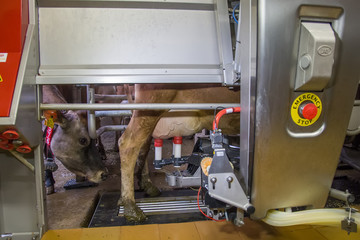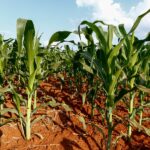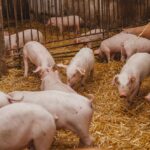Milking robots and automated dairy systems play a significant role in modern farming by revolutionizing the way milk is produced and managed. These technologies offer numerous advantages, including increased efficiency, improved animal welfare, and enhanced data collection and analysis. Here are some key benefits and roles of milking robots and automated dairy systems:
- Efficient and Continuous Milking: Milking robots, also known as robotic milking systems or automatic milking systems (AMS), allow cows to be milked on their own schedule. The robots can milk cows at any time, day or night, based on the cow’s natural milking frequency. This eliminates the need for strict milking schedules and manual labor, resulting in increased efficiency and milk production.
- Enhanced Animal Welfare: Automated milking systems provide cows with more freedom and flexibility. Cows can choose when to be milked and have access to the milking robot whenever they feel the need. This reduces stress and discomfort associated with traditional milking methods, such as manual milking or fixed milking schedules.
- Data Collection and Analysis: Milking robots are equipped with various sensors and software that monitor and record valuable data about each cow. This includes milk yield, milking frequency, milk quality, cow behavior, and health indicators. The collected data can be used to identify individual cow performance, detect health issues early on, optimize feeding programs, and improve overall herd management. Farmers can make data-driven decisions to enhance productivity and animal well-being.
- Labor Reduction and Cost Savings: Milking robots reduce the need for manual labor in the milking process. With automated systems, farmers can focus on other important tasks such as herd management, animal health monitoring, and farm planning. Although the initial investment in milking robots and automated dairy systems can be significant, the long-term cost savings from reduced labor, increased productivity, and improved efficiency can be substantial.
- Improved Milk Quality and Hygiene: Automated milking systems are designed to ensure optimal milk quality and hygiene. The milking process is highly controlled, with individual teat cups and milk collection systems that are cleaned and disinfected between each cow. This reduces the risk of contamination and mastitis, leading to better milk quality and decreased antibiotic usage.
- Scalability and Flexibility: Milking robots and automated dairy systems offer scalability options for dairy farmers. The modular design allows farmers to expand their operations by adding more milking robots as their herd size increases. Additionally, automated systems can be customized to suit different farming setups and cow breeds, providing flexibility for various farm configurations.
Milking robots and automated dairy systems have transformed the dairy industry by streamlining milking operations, improving animal welfare, and enabling data-driven decision
Join 'Farmers Mag' WhatsApp Channel
Get the latest Farming news and tips delivered straight to your WhatsApp
CLICK HERE TO JOIN






